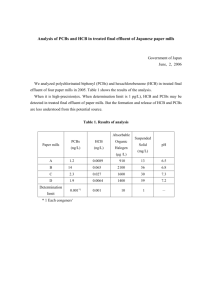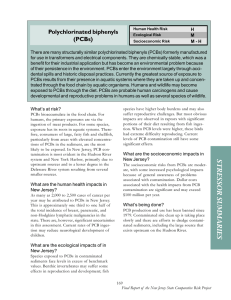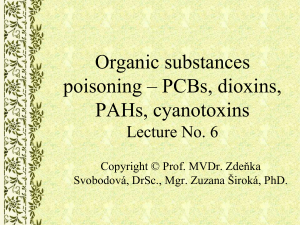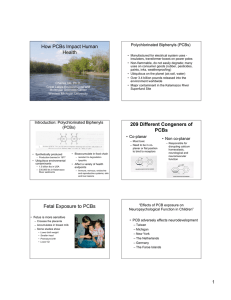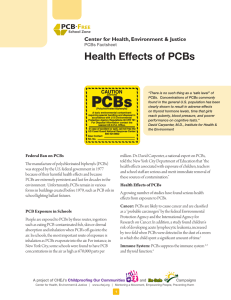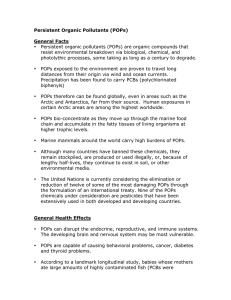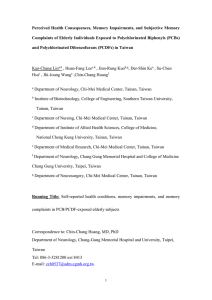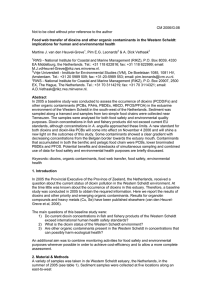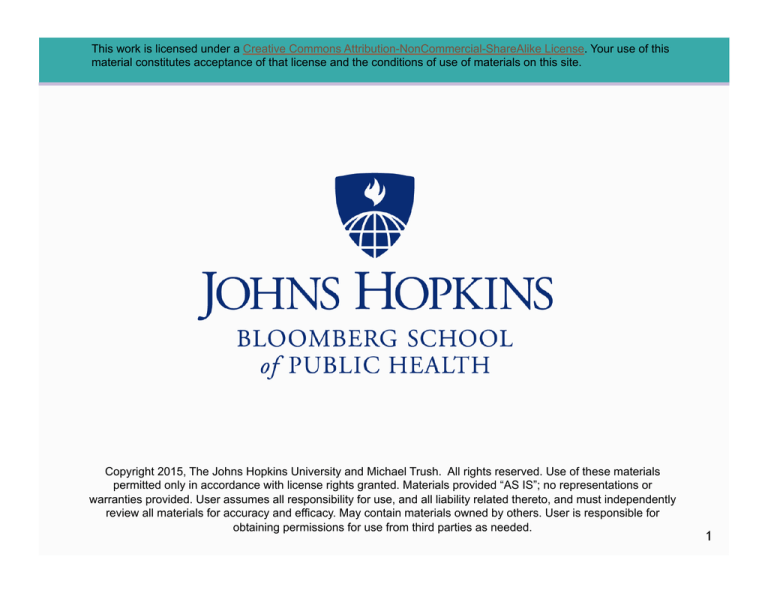
This work is licensed under a Creative Commons Attribution-NonCommercial-ShareAlike License. Your use of this
material constitutes acceptance of that license and the conditions of use of materials on this site.
Copyright 2015, The Johns Hopkins University and Michael Trush. All rights reserved. Use of these materials
permitted only in accordance with license rights granted. Materials provided “AS IS”; no representations or
warranties provided. User assumes all responsibility for use, and all liability related thereto, and must independently
review all materials for accuracy and efficacy. May contain materials owned by others. User is responsible for
obtaining permissions for use from third parties as needed.
1
Persistent Organic Pollutants and Dioxins
Michael A. Trush, PhD
Johns Hopkins University
Section A
General Overview of Persistent Organic
Pollutants (POPs)
The material in this video is subject to the copyright of the owners of the material and is being provided for educational purposes under
rules of fair use for registered students in this course only. No additional copies of the copyrighted work may be made or distributed.
The Toxicological Paradigm
4
Persistent Organic Pollutants
! Remain in the environment for a long time
! Resist chemical and biological degradation
! Can travel long distances
! Bioaccumulate and biomagnify up the food chain
! Have found their way into every living organism on earth
5
Environmental Chemicals in Us
This image can not be provided due to
copyright
6
Examples of POPs
! Pesticides
- Aldrin
- Hexachlorobenzene
- Chlordane
- DDT/DDE
- Dieldrin
- Endrin
- Toxaphene
- Mirex
- Heptachlor
7
Examples of POPs
! Polychlorinated dibenzo-dioxins (PCDDs)
! Polychlorinated dibenzofurans (PCDFs)
! Polychlorinated biphenyls (PCBs)
! Polybrominated diphenylethers (PBDEs)
8
PCDDs, PCDFs, PCBs: Have Similar Chemical Structures
10
9
Cl
10 A
1
O
8
Cl
2
X
X
3A
3
7
Cl
Cl
O
6
X
4
5
1
Cl
8
Cl
Cl
3
6
O
5
4
3
Cl
2
7
Cl
Cl
2,3,7,8 - Tetrachlorodibenzo - p - dioxin
9
X
Cl
2,3,7,8 - Tetrachlorodibenzofuran
2'
2
1
4
5
6
3'
1'
4'
6'
Cl
5'
3, 3', 4, 4' - Tetrachlorobiphenyl
9
PCDDs, PCDFs, PCBs: Have Similar Chemical Structures
10
9
Cl
10 A
1
O
8
Cl
2
X
X
3A
3
7
Cl
Cl
O
6
X
4
5
1
Cl
8
Cl
Cl
3
6
O
5
4
3
Cl
2
7
Cl
Cl
2,3,7,8 - Tetrachlorodibenzo - p - dioxin
9
X
Cl
2,3,7,8 - Tetrachlorodibenzofuran
2'
2
1
4
5
6
3'
1'
4'
6'
Cl
5'
3, 3', 4, 4' - Tetrachlorobiphenyl
10
Regulatory Status of Short List in Six Countries
USA
China
India
Mexico
U.K.
Canada
DDT
!
"
"
#
!
"
Aldrin
!
#
#
!
!
"
Dieldrin
!
#
"
!
!
"
Endrin
!
#
"
!
!
"
Chlordane
#
"
#
#
!
"
Heptachlor
#
#
#
"
!
"
Hexachlorobenzene
!
!
#
Mirex
!
"
Toxaphene
!
#
!
!
!
"
Dioxins/Furans
BP
BP
BP
BP
BP
BP
PCBs
!
"
!
! Banned
" Severely restricted
" No registered uses but unofficially banned
# Not banned or severely restricted; may be registered or unregistered
BP Still produced as a by-product of various industrial processes
Source: (Feb 1998). PSR Monitor.
11

